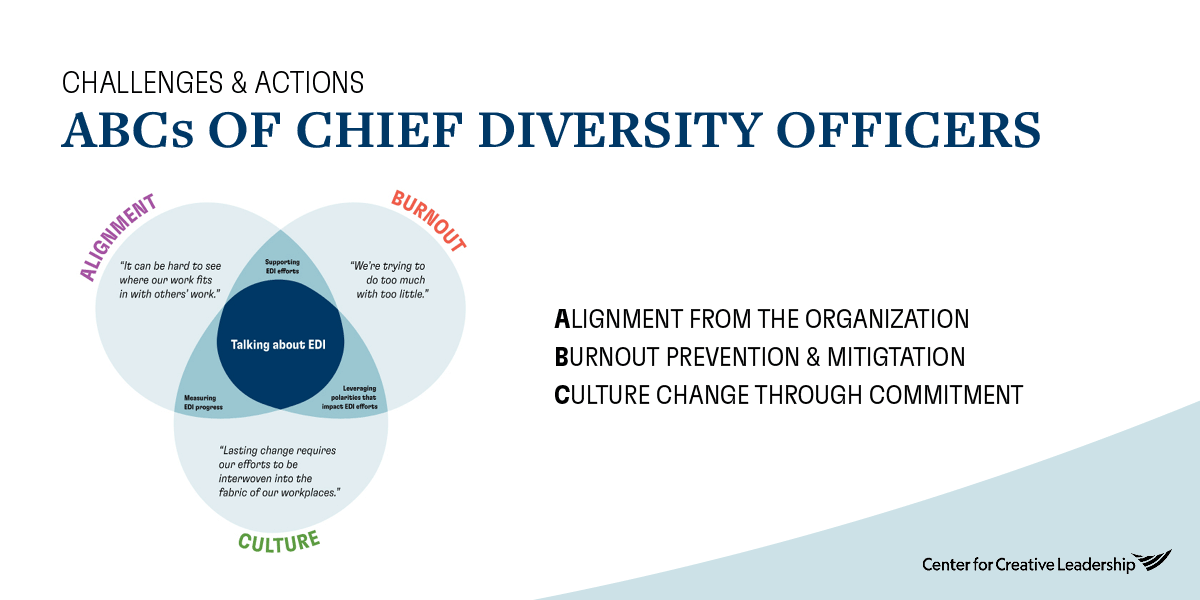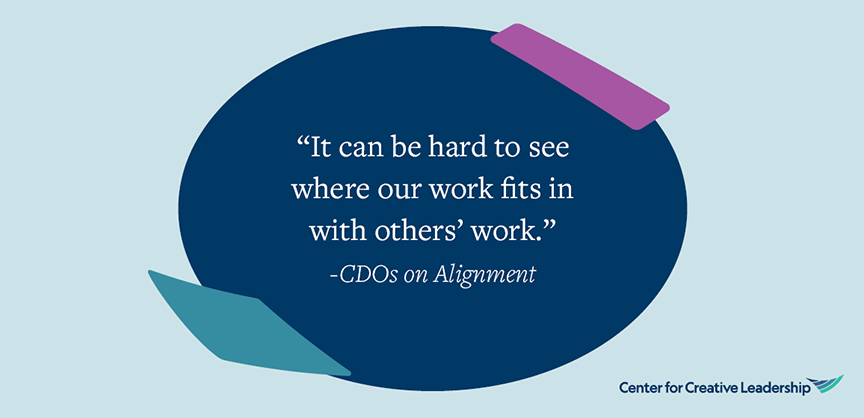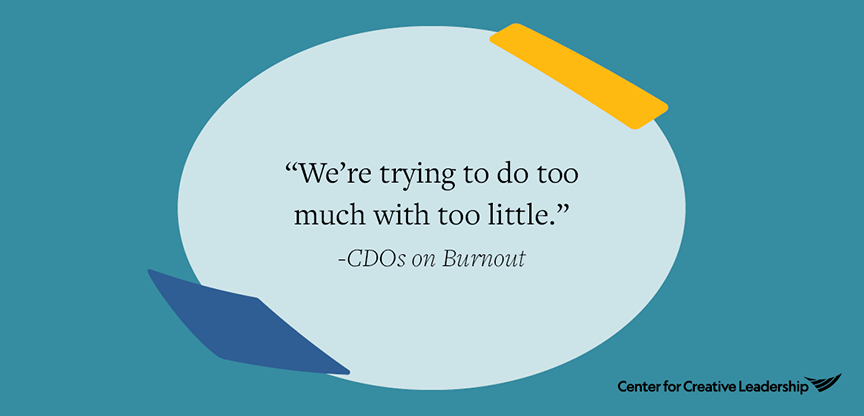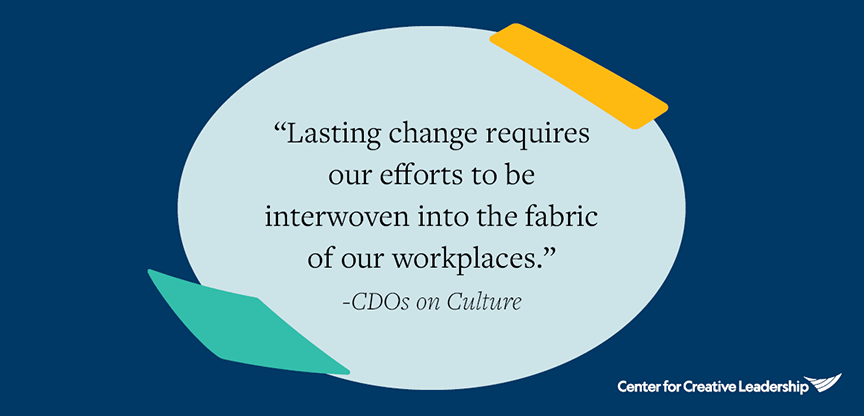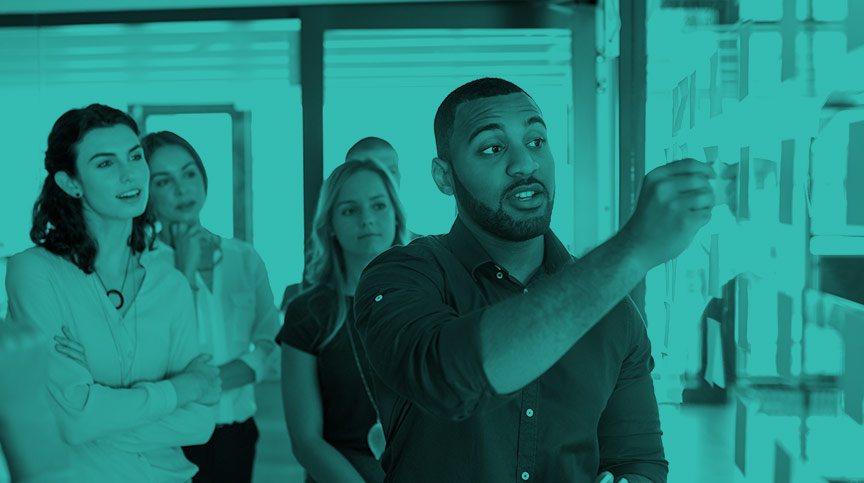Key Insights from Diversity & Inclusion Officers
It’s become nearly impossible to consume any news related to diversity & inclusion in the workplace and not also hear that the role of the Chief Diversity Officer (CDO), once the “It-Job,” is now in peril.
Many factors — from political and social backlash and the recent Supreme Court ruling on affirmative action, to economic pressures, layoffs, shrinking budgets, and even AI — have contributed to a pullback at organizations across the country.
While it’s tempting to jump straight into challenges and solutions, we believe it’s important to understand why we must address the dilemma of diversity & inclusion officers now.
Regardless of personal or corporate political leanings or progress in diversity efforts, the reality is that the Millennial generation is increasingly filling leadership roles in companies and organizations. They comprise the largest part of the American workforce, studies show, and as consumers, they expect brands to take moral stands on issues. As employees, Millennials want their organizations to be intentional and strategic about creating inclusive company cultures and equitable access to opportunities for growth and development.
To build our understanding of this complex role and organizational efforts to support DEI or EDI (Equity, Diversity, and Inclusion — learn why we lead with equity first), we spent time with senior diversity & inclusion officers from organizations in the Fortune 1000. We engaged over 60 diversity officers and other enterprise DEI leaders from various industries, including telecommunications, healthcare, manufacturing, retail, finance, and energy.
We listened as these leaders opened up about their perspectives, challenges, and aspirations for the future. They shared their organizations’ levels of investment in DEI and their personal experiences as enterprise diversity officers and shared these insights in our report, The ABCs of Chief Diversity Officers: Alignment, Burnout, and Culture.
Their input confirmed what we’ve all been hearing: Chief Diversity Officers often don’t have the support they need to fully realize sustainable change for EDI.
The Top Challenges of Chief Diversity Officers
While some U.S.-based companies had diversity & inclusion officers prior to 2020, many did not — and the ones that did often granted their DEI leaders limited resources, power, and influence, hampering their ability to build consensus and make lasting advancements in company culture.
Many more organizations created new positions for senior diversity officers for the first time in 2020–2021, and in fact “Chief Diversity Officer” became the C-suite title with the fastest hiring growth in those years, according to LinkedIn. In some cases, they were onboarded into environments that were ill-prepared to receive them.
From the experiences and aspirations of the senior DEI officers we interviewed, we can learn how to create more diverse, equitable, and inclusive workplaces. Factoring in what these leaders ranked as their highest concerns in both importance and urgency, their top 5 challenges are primarily issues of alignment and culture, but in combination, all point squarely at burnout:
- Conveying the importance of EDI to middle managers
- Integrating EDI into the organization’s DNA
- Changing EDI-related behaviors and actions
- Translating strategic goals into practices, policies, etc.
- Achieving alignment and commitment to EDI outcomes
Our resulting insights pointed to a 3-tiered way forward — sort of an A, B, C approach — for DEI officers and their organizations to support and sustain diversity & inclusion efforts:
Alignment: Diversity Officers’ Challenge of Getting Everyone On Board
Most of the Chief Diversity Officers that we talked with reported that they found less organizational alignment around EDI than it originally seemed when they were first hired. Stakeholders didn’t necessarily agree on tactics, goals, objectives, or ways of measuring progress. Outcomes weren’t clear, and decision-making authority and mandates were often vague. And when there isn’t agreement on what everyone should be trying to achieve, success can be difficult to define.
Alignment can be represented by a supportive organizational structure and outcome clarity — one without the other leads to further frustration. By now, most diversity officers and the HR teams who hire them understand that CDOs and executive diversity and inclusion officers must report to the CEO to ensure actual authority and perceived priority. What seems more difficult to achieve is an agreed-upon suite of KPIs to monitor and measure success.
“[As a CDO], your work — and even your job — is never secure or settled,” adds Stephanie Wormington, our Director of Global Strategic Research and member of our EDI practice. Being a diversity officer therefore “requires constant monitoring and adaptation. You have to constantly check — and recheck — and then check again that everything and everyone is aligned to meet your goals.” Being aligned on what outcomes are most desired and expected can make progress easier.
Taking Action: Creating Alignment
The reality is that leadership isn’t just about individual leaders and their capabilities — it’s a social process that happens in the interactions and exchanges among people with shared work, as outlined in our Direction – Alignment – Commitment (DAC)™ framework.
DAC can provide leaders with guidance on recognizing and addressing alignment issues. DAC considers what it takes for individuals to willingly and effectively combine their efforts to produce collective results, together. This framework directly translates to the work of diversity officers, as it promotes the idea that leadership is a social process that revolves around mutual influence.
Burnout: DEI Officers Struggle to “Secure Their Own Masks First”
It’s important to acknowledge that burnout is not unique to diversity work. It’s a condition the entire workforce has collectively experienced at increased rates since the pandemic. In fact, burnout was named an occupational phenomenon worldwide by the World Health Organization.
However, among the C-suite roles in an organization, the Chief Diversity Officer job is often more socially, emotionally, and mentally taxing than others because of the very personal nature of diversity work. Individuals are sometimes asked to communicate vulnerability, insecurity, bias, anxiety, concern, and even resentment, plus a host of other emotions that impact workplace behavior. The work of diversity officers can literally be exhausting.
The culprits of burnout are a lack of resourcing and a need for community. Both can be areas of trouble for DEI leaders. We gleaned these insights from CDOs around the causes of the burnout they face:
- Staffing is inconsistent and not proportional to organizational size — which may make driving diversity & inclusion for the enterprise feel like a very big task for a very small few. For example, we found some $20B organizations had just one single full-time headcount dedicated to EDI work.
- Organizational funding for diversity & inclusion budgets is all over the board. Although the median investment for enterprise EDI work was $350,000, or about $32 for every FTE, the amount spent again varied greatly across companies. Alarmingly, the average EDI budget was just $57 for every $1M in organizational revenue. Some organizations allocated as little as $4 per employee for EDI, while others budgeted as much as $300.
- Diversity officers are typically juggling more than 10 responsibilities. They reported being tasked with addressing equity, diversity, and inclusion in everything from talent recruitment, retention, and promotion to supply chain diversification to internal education and capacity development.
And as the Vice President of our Equity, Diversity, and Inclusion practice, Michael DePass, notes, “To actually move the culture toward EDI, people have to want to … The CDO feels the burden of getting people to want to do it. Even if they have the money, even if they have the staff, they still struggle.”
This leads us to community; fostering a supportive and engaged community is another burnout-related challenge diversity & inclusion officers consistently face. Sensing a lack of respect and urgency on the part of other leaders, the C-suite, or the board can be discouraging. Likewise, it can be draining to feel you must constantly be pulling others along, while at the same time trying to keep up your own motivation.
Taking Action: Preventing Burnout
But the news isn’t all bad. We also found that diversity officers didn’t name their own burnout as the primary cause of slow progress on EDI. Rather — and perhaps unfortunately — they see it as part of the nature of their very purpose-driven work. They are passionate advocates who recognize they have signed up for a challenge.
Prioritizing their own wellbeing can serve the greater EDI cause in the organization, and leaders can reflect on this by asking themselves questions like:
- Which of my responsibilities feel most aligned to my sense of purpose?
- Do I focus enough on my own wellbeing? Does our team and organizational culture encourage employees to focus on their own health?
- How can we support one another in prioritizing what’s most important?
Access Our Webinar!
Watch our webinar, Navigating Challenges: Chief Diversity Officers & HR Leaders in DEI Roles to learn how Chief Diversity Officers and other leaders can learn to balance the competing tensions they face as they lead organizational DEI work.
Culture: Diversity & Inclusion Officers’ Challenge of Weaving DEI Into the Fabric of the Organization
Company culture is a set of shared values, attitudes, and behaviors established by leadership to achieve internal and external success. When a person becomes a part of a company or organization, they are agreeing to be a part of a culture in addition to belonging to their personal culture or cultures. Further, all cultures must evolve. Social, political, technological, and other forces are constantly at play, which means change is guaranteed.
Culture change isn’t easy, but it may be bolstered by determining strategic priorities, re-evaluating policies, establishing a common language around EDI, and normalizing how employees talk to one another and collaborate. The work is not a one-size-fits-all, and a close alliance between the C-suite and the CDO is critical.
Our research shows that to build or bolster culture, senior leadership must empower diversity officers to:
- Establish strategic partnerships, internal and external.
- Establish meaningful metrics.
- See the bigger picture.
Participants who have had success in shifting culture cited things like breaking down silos and sharing EDI responsibility by function, peer-to-peer groups within the organization, and ongoing ties with external EDI consultants and civil rights leaders as part of their success in creating a diversity roadmap and implementing it.
When diversity efforts go beyond box-checking and become serious enterprise-wide initiatives, they transcend simple statistics and bring tangible benefits to organizations. We advise avoiding merely cosmetic activities or trying to appear as a good corporate citizen. Tying EDI goals to the larger organizational purpose and vision can help employees understand why they should be invested.
CDOs must be able to connect the dots, build understanding across the organization, and see the bigger picture to craft an actionable roadmap for EDI change. Having a view of the entire system and where the organization wants to go allows them to suggest solutions that will meet all stakeholders where they are and create a collective shift toward a more committed EDI culture.
Taking Action: Leveraging Polarities to Foster Culture Change
For lasting culture change, it’s important that leaders leverage polarities and establish new initiatives within existing ecosystems. In other words, executives may feel pulled between two seemingly conflicting things that appear at odds with one another and feel tempted to focus on just one or the other — but doing so risks underwhelming results and even backlash from stakeholders.
A polarity — also described as a paradox, conundrum, or contradiction — is a dilemma that is ongoing, unsolvable, and contains seemingly opposing ideas.
For leaders to work with polarities, they need to be able to see both perspectives clearly and at the same time. The trick isn’t to solve a polarity or to make a choice and move on. Instead, effective leaders handle a polarity by recognizing and acknowledging it, and then by moving mentally and practically through the ebbs and flows that it presents.
Ready to Take the Next Step?
Download our full research report on The ABCs of Chief Diversity Officers: Alignment, Burnout, and Culture to learn more, or partner with us to support the critical work of your organization’s diversity & inclusion officers. We can help you move your organization forward so that mindsets, behaviors, and practices are more equitable, diverse, and inclusive. Learn more about our EDI practice and solutions.


